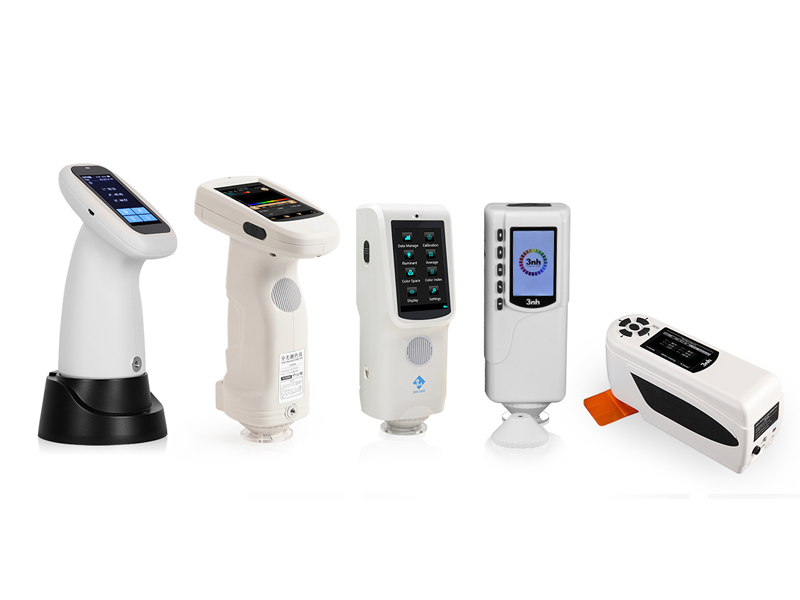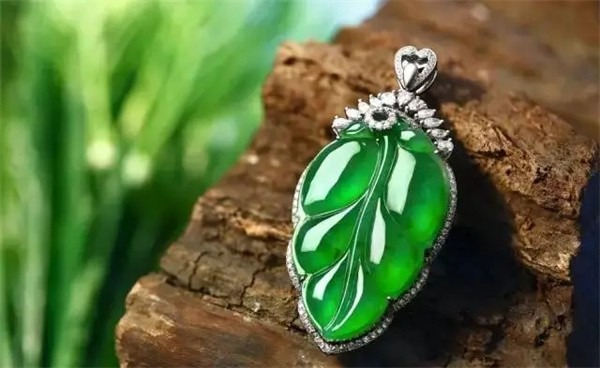Colorimeter color quantitative testing and evaluation is mainly used for printed materials, coatings, dyed products, and even liquids and other raw materials of different textures, but it is rarely used for high-gloss, opaque or transparent gemstones.
The evaluation of gemstone color is often based on subjective experience. For example, the best ruby red is called pigeon blood red, and the best topaz yellow is called whiskey yellow. Although these names are in line with traditional Chinese culture and are very conducive to naked eye identification and commercial circulation, they overemphasize color perception and ignore the objective color of the gemstone. Therefore, on the one hand, it makes it difficult to compare colors, and on the other hand, it brings insurmountable obstacles to the construction of an objective gemstone color evaluation system.
With the maturity of computer image processing technology and the gradual application of colorimetry in mineralogy, the difficult problem of objective and quantitative analysis of jade color, formulation and transparency characteristics, and their comprehensive contribution to color evaluation has been solved, realizing the transformation of color from subjective qualitative evaluation relying on experience to objective quantitative evaluation.
Instrument setup
The color of a gemstone is determined by three factors: the color of the object, the light source, and the observer.
- The color of an object is the combined effect of the color perception produced by the reflected light and transmitted light of the gemstone stimulating the human eye;
- Light source: Use CIE standard lighting sources A, B, C, and D that meet the spectral power distribution of standard lighting bodies. Among them, the most common test light source is the daylight source D65 with a color temperature of 6504K;
3.Observer, use the same market such as 2°, 4° and 10° field, etc., according to the needs of the sample.
Gemology uses a three-factor color representation system based on hue, lightness, and saturation, often using the 2° field CIE 1931 chromaticity diagram to quantitatively represent color. However, because this two-dimensional chromaticity plane is formed by compressing the lightness axis, it only emphasizes relatively bright colors at a lightness of 50 when expressing the overall effect of color, failing to truly encompass the entire color range and even failing to meet the requirements for accurate and detailed gemstone color grading.
a. Observer

The chromatogram colorimeter provides two observer angles: 2° and 10°. Due to their preciousness, market gemstone specimens are often small in size. Taking into account the influence of the cut shape, even plain gemstones will scatter a considerable portion of the projected light. Therefore, the smallest circular 6mm measurement aperture (reflection) is selected for measuring specimens to reduce errors, and the 2° market is selected.
Measuring range
The wavelength range of the test light source is divided into UV mode and UV exclusion mode. The visible light wavelength range is 380nm to 780nm. Considering that many gemstones exhibit varying degrees of fluorescence, while its direct contribution to color is minimal, the human eye is very sensitive to the color perception of fluorescence. The energy of the gemstone’s long-wave UV light at 365nm is released as visible light at 420nm, causing the reflection rate at this point to exceed 100%, converting the invisible long-wave UV light into visible light. Therefore, the chromatographic colorimeter’s UV mode uses a test range of 360nm to 380nm to simulate the true effect of the human eye. For natural jadeite with little fluorescence, the chromatographic colorimeter can still select UV exclusion mode, that is, a test range of 380nm to 750nm.
Lighting source
Although different light sources produce significantly different color stimuli for the human eye, the objectivity and consistency of independent color evaluation systems using different light sources are almost identical. Furthermore, the development of chromatographic colorimeters must take into account the need to include simulated daylight D-series light sources (color temperature 5500K~7200K) in the ultraviolet wavelength region, as well as the fact that outdoor daylight must be used as a reference for gem identification and grading. Therefore, the D65 normal daylight-simulating light source with a correlated color temperature of 6504K was determined as the test illumination source for chromatographic colorimeters.
Lighting Mode
Advanced colorimeter models typically feature both transmitted and reflected light illumination modes. For gemstones with low or even opaque transparency, the reflected light mode is recommended. For gemstones with high or even completely transparent transparency, the transmitted light mode is recommended. Both light sources must be directed perpendicularly into the gemstone to prevent partial reflection. Gemstones with high Mohs hardness and strong luster, such as the adamantine luster of diamond and the vitreous luster of jade, will experience significant color degradation due to the specular reflections on the gemstone surface. Therefore, the specular reflection exclusion (SCE) mode is selected to achieve relatively objective and visually accurate gemstone color test results.
Reproducibility test
The inter-instrument variation of a chromatographic colorimeter is generally around 0.08 ΔE CIE Lab. The stability of the instrument can be verified by measuring the precision of the test results and the accuracy of the indicator’s correspondence to the “correct value.” The emphasis on precision and accuracy depends on the application. When a chromatographic colorimeter is used to verify the consistency of products with the same spectral composition as itself, precision is crucial, while high accuracy is unnecessary. Therefore, the measured data is verified by repeated testing and averaging.
Selection of uniform color space and color difference formula
Modern color science has introduced hue (H*), lightness (L*), and chroma (C*) into the CIE 1976 L*a*b* uniform color space. Each of these three factors has a unique position relative to it, and the distance between any two points represents the difference between two different colors, namely, color difference. This overcomes the problem that equal distances on the xy chromaticity diagram in the Yxy color space do not equate to objectively equal color differences. This color space uses the complementary color theory, where L* represents lightness, and a* and b* are chromaticity coordinates: a* is in the direction of red, -a* is in the direction of green, b* is in the direction of yellow, -b* is in the direction of blue, and the center is the achromatic region. As the a* and b* values increase, the color point moves away from the center, and the chromaticity increases. Both hue and chroma can be derived from the chromaticity value, namely, H*ab=tan-1(b*/a*), and C*ab=((a*)²+(b*)²)1/2
Compared to the popular CIE 1976L*a*b* uniform color space, the CIE 1976LCH uniform color space fully conforms to the subjective characteristic of the human eye, where the visual color difference scale in the red and green directions is smaller than that in the yellow and blue directions. The calculated green difference value of the sample pair is very close to the actual color difference observed by the human eye. For pure green, it has a high uniformity. However, because the CIE LCH color system is a polar coordinate representation of the CIE 1976L*a*b* color space, the CIE 1976L*a*b* uniform color space and the basic formula CIE LAB based on this space with good lightness difference prediction performance are still selected.
Evaluation steps and analysis methods of jadeite color
- Adapt to light source and environment
The color assessor’s visual system must first adapt to the jadeite light source and surrounding environment, including color adaptation and light intensity adaptation. The color assessor should observe colored and neutral patterns under the light source, and then observe the colors of a standard color chart. After visual adaptation, the color assessor should perceive the light source as colorless, with a moderate intensity and no visual discomfort.
- Determine the characteristic color
Due to the wide variety of jadeite weights, shapes, and cutting styles, the distribution of characteristic colors also varies. Accurately determining characteristic colors requires experience. The standard 0/45 configuration is used for lighting and observation, with the color of the table surface representing the observed color. The color assessor places the jadeite table surface facing up in a milky white observation tank and observes the color distribution of the table surface at a 45° angle. Under strict 0/45 standard conditions, the color assessor may observe specular reflections from the table surface. To minimize the influence of direct specular reflections from the table surface on characteristic color determination, as well as the effects of extinction, windowing, and dispersion, slight variations in the table surface angle and observation angle are permitted. The maximum combined adjustment should be less than 10 degrees. The next step is to determine the color zone based on the color distribution of the jadeite table surface. Because color distribution within a jadeite color zone is uneven, the color assessor must mentally average the entire color zone. The color obtained through mental averaging is the jadeite’s characteristic color.
- Compare colors
After determining the characteristic color, the color assessor should estimate the three elements of the characteristic color: hue, saturation, and brightness. First, locate the corresponding hue plane of the Munsell color chart based on the hue of the characteristic color. Place the corresponding hue on the Munsell color chart under a standard light source, parallel to the jadeite. Then, compare the jadeite’s saturation and brightness with the color chart within the hue plane to determine the position of the characteristic color on the corresponding hue plane of the Munsell color chart.
Generally, a characteristic color is unlikely to be identical to a color on the Munsell color chart. When comparing colors, first find a color plane with a hue closest to the jade’s characteristic color and identify the Munsell color chart that most closely matches the characteristic color. Then, determine the difference in saturation and brightness between the jade’s characteristic color and the saturation and brightness of the Munsell color chart to estimate the approximate location of the characteristic color in color space.
- Determine the color level
As mentioned above, the Munsell color space is divided into different color levels. By comparing the color position of the characteristic color with the corresponding color level in the Munsell color space, the color level of the jadeite can be obtained.
How to Measure the Color of Jadeite
Key Steps for Measuring Jadeite Color
- Prepare the Jadeite Sample: Ensure the sample is clean and free of surface contaminants like oil or dust, as these can distort color perception. If the sample has uneven texture (e.g., veins or inclusions), mark the specific area to be measured for consistency.
- Select a Professional Color Measurement Device: Use a spectrophotometer or colorimeter suitable for gemstones. Devices with d/8° (diffuse illumination, 8° viewing angle)geometry are preferred, as they simulate natural light and reduce the impact of jadeite’s translucency on results.
- Calibrate the Device: Follow the device instructions to calibrate it with a standard white tile before measurement. This step ensures the accuracy of subsequent color data.
- Perform the Measurement: Place the device’s measuring port close to the pre-marked area of the jadeite. Avoid direct ambient light (e.g., strong sunlight or fluorescent lamps) during testing. Record multiple readings (3–5 times) and take the average to minimize errors.
- Analyze Color Data: Convert the measured data into a standard color space widely used for gemstones, such as CIELAB. Focus on three key parameters:
- L* (Lightness): Indicates how light or dark the jadeite is (0 = black, 100 = white).
- a* (Red-Green Axis): Positive values represent red tones, negative values represent green tones (critical for evaluating “emerald green” jadeite).
- b* (Yellow-Blue Axis): Positive values represent yellow tones, negative values represent blue tones (affects the purity of jadeite’s green).
Supplementary Notes
- Avoid Visual Judgment Alone: Human eyes are prone to subjective errors due to lighting and fatigue. Professional devices provide objective, quantifiable data that aligns with industry appraisal standards.
- Consider Jadeite’s Translucency: Jadeite varies in translucency (from opaque to semi-transparent). Some advanced devices offer functions to adjust for translucency, ensuring color measurements reflect the sample’s true appearance.
Would you like me to organize a step-by-step English operation guide for a specific type of color measurement device (e.g., portable spectrophotometer) used for jadeite?


